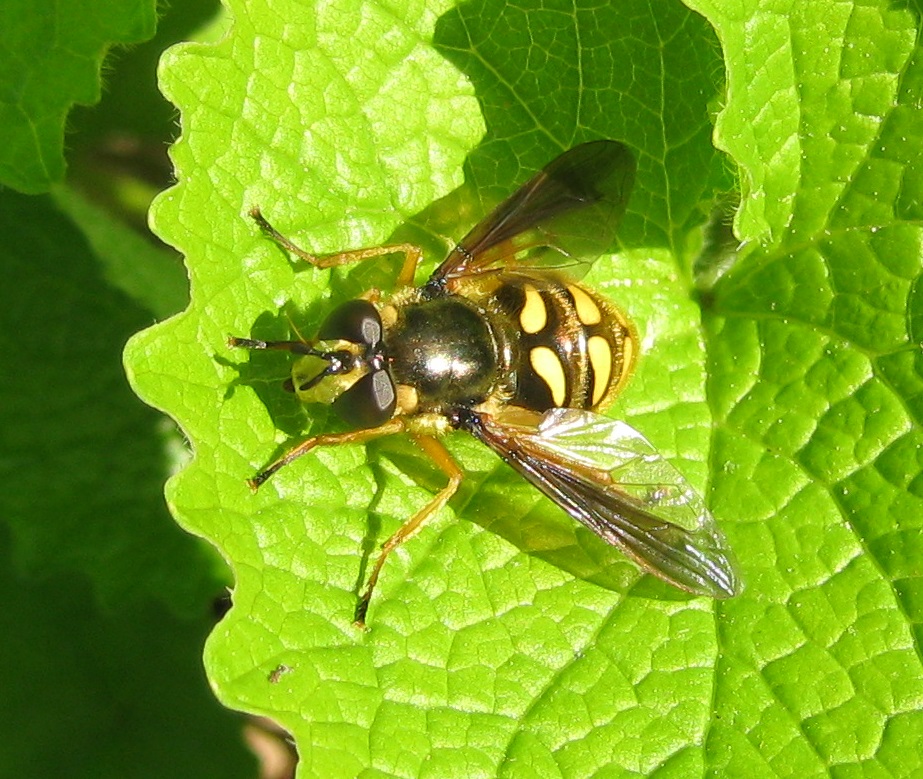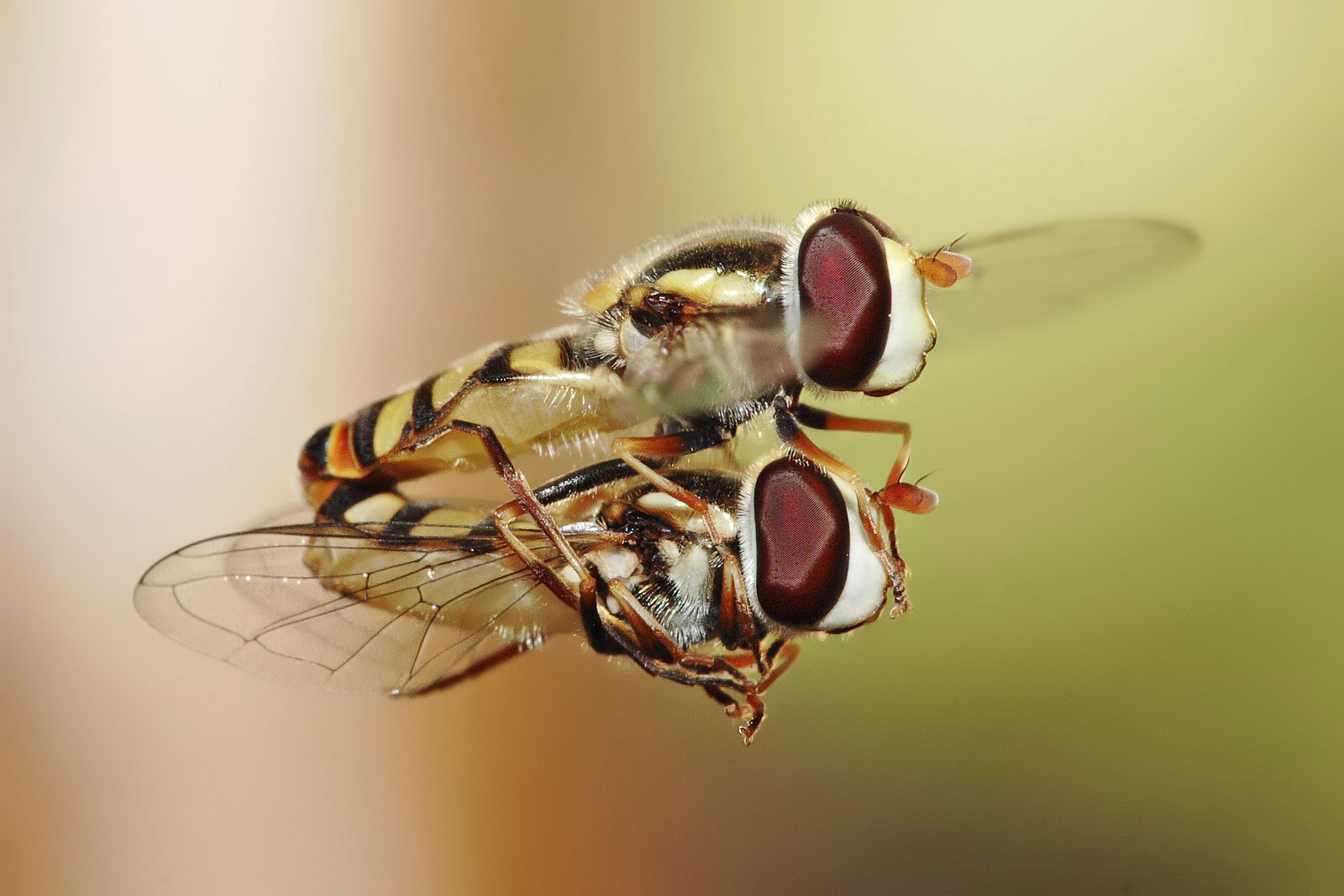|
Somula
''Somula'' is a genus of syrphid flies in the family Syrphidae. There are at least two described species in ''Somula''. Species *''Somula decora'' Macquart, 1847 *'' Somula mississippiensis'' Hull Hull may refer to: Structures * Chassis, of an armored fighting vehicle * Fuselage, of an aircraft * Hull (botany), the outer covering of seeds * Hull (watercraft), the body or frame of a ship * Submarine hull Mathematics * Affine hull, in affi ..., 1922 References Further reading * * * * External links * Milesiini Hoverfly genera Diptera of North America Taxa named by Pierre-Justin-Marie Macquart {{Milesiini-stub ... [...More Info...] [...Related Items...] OR: [Wikipedia] [Google] [Baidu] |
Somula Decora
''Somula decora '' (Macquart, 1847), the Spotted Wood Fly, is an uncommon species of syrphid fly observed in central to eastern North America. Hoverflies can remain nearly motionless in flight. The adults are also known as flower flies for they are commonly found on flowers, from which they get both energy-giving nectar and protein-rich pollen. The larvae live in decaying wood. Distribution Canada, United States The United States of America (U.S.A. or USA), commonly known as the United States (U.S. or US) or America, is a country primarily located in North America. It consists of 50 U.S. state, states, a Washington, D.C., federal district, five ma .... References Further reading * * * * External links * Eristalinae Insects described in 1847 Diptera of North America Hoverflies of North America Taxa named by Pierre-Justin-Marie Macquart {{syrphidae-stub ... [...More Info...] [...Related Items...] OR: [Wikipedia] [Google] [Baidu] |
Somula Mississippiensis
''Somula mississippiensis'' is a species of syrphid fly in the family Syrphidae. Distribution United States The United States of America (U.S.A. or USA), commonly known as the United States (U.S. or US) or America, is a country primarily located in North America. It consists of 50 U.S. state, states, a Washington, D.C., federal district, five ma .... References Milesiini Insects described in 1922 Diptera of North America Hoverflies of North America Taxa named by Frank Montgomery Hull {{Milesiini-stub ... [...More Info...] [...Related Items...] OR: [Wikipedia] [Google] [Baidu] |
Milesiini
The Milesiini (or Xylotini) is a large and diverse tribe of hoverflies. They mimic wasps or hornets. List of genera *'' Aneriophora'' Stuardo & Cortes, 1952 *''Blera'' Billberg, 1820 *'' Brachypalpus'' Macquart, 1834 *'' Caliprobola'' Rondani, 1845 *'' Chalcosyrphus'' Curran, 1925 *'' Criorhina'' Meigen, 1822 *'' Cynorhinella'' Curran, 1922 *''Deineches'' Walker, 1852 *'' Flukea'' Etcheverry, 1966 *'' Hadromyia'' Williston, 1882 *'' Hemixylota'' Shannon & Aubertin, 1933 *''Lejota'' Rondani, 1857 *''Lycastris'' Walker, 1857 *''Macrometopia'' Philippi, 1865 *''Macrozelima'' Stackelberg, 1930 *''Malometasternum'' Shannon, 1927 *''Matsumyia'' Shiraki, 1949 *''Meropidia'' Hippa & Thompson, 1983 *'' Milesia'' Latreille, 1804 *''Nepenthosyrphus'' de Meijere, 1932 *'' Odyneromyia'' Shannon & Aubertin, 1833 *'' Orthoprosopa'' Macquart, 1850 *'' Palumbia'' Rondani, 1865 *'' Philippimyia'' Shannon, 1926 *'' Pocota'' Lepeletier & Serville, 1828 *''Pterallastes'' Loew, 1863 ... [...More Info...] [...Related Items...] OR: [Wikipedia] [Google] [Baidu] |
Pierre-Justin-Marie Macquart
Pierre-Justin-Marie Macquart (8 April 1778 – 25 November 1855) was a French entomologist specialising in the study of Diptera. He worked on world species as well as European and described many new species. Biography Early years Macquart was born in Hazebrouck, France, in 1778 and died in Lille in 1855. He was interested in natural history from an early age due to his older brother who was an ornithologist and a Fellow of the Société de Sciences de l’Agriculture et des Arts de la Ville de Lille and whose bird collection became the foundation of the societies museum, the Musée d'Histoire Naturelle de Lille. A second brother founded a botanic garden with a collection of over 3000 species of plants. Macquart, too became interested in natural history. In 1796 he joined the staff of General Armand Samuel then campaigning in the Revolutionary Wars. He was a secretary and draftsman. The general staff was stationed in Schwetzingen, then Heidelberg, Mainz, Aarau, Basel and Zuri ... [...More Info...] [...Related Items...] OR: [Wikipedia] [Google] [Baidu] |
Syrphid Fly
Hover flies, also called flower flies or syrphid flies, make up the insect family Syrphidae. As their common name suggests, they are often seen hovering or nectaring at flowers; the adults of many species feed mainly on nectar and pollen, while the larvae (maggots) eat a wide range of foods. In some species, the larvae are saprotrophs, eating decaying plant and animal matter in the soil or in ponds and streams. In other species, the larvae are insectivores and prey on aphids, thrips, and other plant-sucking insects. Insects such as aphids are considered a crop pest, and therefore the aphid-eating larvae of some hover flies serve as an economically (as well as ecologically) important predator and even potential agents for use in biological control, while the adults may be pollinators. About 6,000 species in 200 genera have been described. Hover flies are common throughout the world and can be found on all continents except Antarctica. Hover flies are harmless to most mammals, t ... [...More Info...] [...Related Items...] OR: [Wikipedia] [Google] [Baidu] |
Syrphid - Somula Decora, Sugarloaf Mountain, Dickerson, Maryland
Hover flies, also called flower flies or syrphid flies, make up the insect family Syrphidae. As their common name suggests, they are often seen hovering or nectaring at flowers; the adults of many species feed mainly on nectar and pollen, while the larvae (maggots) eat a wide range of foods. In some species, the larvae are saprotrophs, eating decaying plant and animal matter in the soil or in ponds and streams. In other species, the larvae are insectivores and prey on aphids, thrips, and other plant-sucking insects. Insects such as aphids are considered a crop pest, and therefore the aphid-eating larvae of some hover flies serve as an economically (as well as ecologically) important predator and even potential agents for use in biological control, while the adults may be pollinators. About 6,000 species in 200 genera have been described. Hover flies are common throughout the world and can be found on all continents except Antarctica. Hover flies are harmless to most mammals, t ... [...More Info...] [...Related Items...] OR: [Wikipedia] [Google] [Baidu] |
Frank Montgomery Hull
Frank Montgomery Hull (November 3, 1901 – 1982) was an American naturalist who specialized in entomology, especially Diptera Flies are insects of the order Diptera, the name being derived from the Greek δι- ''di-'' "two", and πτερόν ''pteron'' "wing". Insects of this order use only a single pair of wings to fly, the hindwings having evolved into advanced .... Works * * * * References American entomologists 1982 deaths 1901 births People from Coahoma, Mississippi Dipterists Mississippi State University alumni University of Mississippi faculty Texas A&M University faculty New Mexico State University faculty Ohio State University alumni Harvard University alumni Scientists from Mississippi 20th-century American zoologists {{US-entomologist-stub ... [...More Info...] [...Related Items...] OR: [Wikipedia] [Google] [Baidu] |
Hoverfly Genera
Hover flies, also called flower flies or syrphid flies, make up the insect family Syrphidae. As their common name suggests, they are often seen hovering or nectaring at flowers; the adults of many species feed mainly on nectar and pollen, while the larvae ( maggots) eat a wide range of foods. In some species, the larvae are saprotrophs, eating decaying plant and animal matter in the soil or in ponds and streams. In other species, the larvae are insectivores and prey on aphids, thrips, and other plant-sucking insects. Insects such as aphids are considered a crop pest, and therefore the aphid-eating larvae of some hover flies serve as an economically (as well as ecologically) important predator and even potential agents for use in biological control, while the adults may be pollinators. About 6,000 species in 200 genera have been described. Hover flies are common throughout the world and can be found on all continents except Antarctica. Hover flies are harmless to most ... [...More Info...] [...Related Items...] OR: [Wikipedia] [Google] [Baidu] |
Diptera Of North America
Flies are insects of the order Diptera, the name being derived from the Greek δι- ''di-'' "two", and πτερόν ''pteron'' "wing". Insects of this order use only a single pair of wings to fly, the hindwings having evolved into advanced mechanosensory organs known as halteres, which act as high-speed sensors of rotational movement and allow dipterans to perform advanced aerobatics. Diptera is a large order containing an estimated 1,000,000 species including horse-flies, crane flies, hoverflies and others, although only about 125,000 species have been described. Flies have a mobile head, with a pair of large compound eyes, and mouthparts designed for piercing and sucking (mosquitoes, black flies and robber flies), or for lapping and sucking in the other groups. Their wing arrangement gives them great maneuverability in flight, and claws and pads on their feet enable them to cling to smooth surfaces. Flies undergo complete metamorphosis; the eggs are often laid on the la ... [...More Info...] [...Related Items...] OR: [Wikipedia] [Google] [Baidu] |




_(10144905255).jpg)